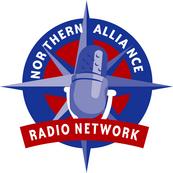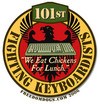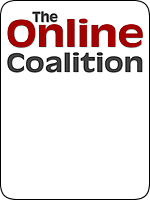
« Coming Later Tonight: Interview With "MIke" | Main | A Voice From The Front, Part II »
A good friend of mine has served in the Navy as a SEAL, both active-duty and reserves, since the Vietnam War. �Mike� most recently spent the better part of the past three years in Iraq before, during, and after the war. After serving as an active-duty SEAL handling Arabian Gulf interdiction missions, he took a leave of absence to work as a civilian security contractor inside Iraq, including some of the toughest areas in the Sunni Triangle, such as Fallujah and Tikrit. As a private contractor, Mike spent most of his time securing and destroying captured enemy ordinance at ammunition supply points like Al Qaqaa, which has found itself the center of attention during this presidential election. However, Mike worked on sensitive missions during his time in the Gulf, and for the safety of his family has asked that he not be identified by name.
I interviewed Mike twice, once for Captainsquartersblog.com and once on the Northern Alliance Radio Network Network in Minneapolis, MN. I�ve combined the two interviews to share Mike�s first-person perspective on his missions, the ongoing American effort, and the effect our election is having on the Iraqi people.
Q: When did you first to go to Iraq and in what capacity?
A: I got called up to Enduring Freedom in November 2001, from my civilian job. I�m a reservist with a naval Special Warfare unit. I�m a SEAL corpsman, and my first assignment was to train up SEALS to deploy, and then I was put in an active-duty role to go forward with a special boat team that does ship takedowns in the North Arabian Gulf.
What we�re doing is stopping smuggler vessels in the middle of the night that were smuggling for Iraq prior to the war. We did 32 direct-action missions against blacked-out ships that were trying to get away from us. They were loaded with every kind of contraband you could think of. Everything coming out of Iraq was carrying illegal oil. Anything coming in was carrying weapons and other kinds of things.
Q. Mike, you and I were talking about that earlier. Where did these illegal weapons come from that you captured on these interdiction missions?
A: Anything that came into Iraq in the mid-90s, no matter where it came from, was illegal because of the embargo, which leads to my next job. Russia, China, France were all the countries that were supplying Iraq in the last decade or so.
Q. When you were running these missions, that�s what you were finding, and the weapons were coming from those three countries?
A. Some. You know, it�s difficult for me in my SEAL role to know where a lot of it comes from. If you have AK-47s all over the place and they�re made in Russia, you can only assume at some point it came from Russia. You don�t know at what point the smuggler got hold of them. The smugglers were either merchants from India or Pakistan or various other places, or some of them were terrorists. There were a couple of high-value targets that we actually did stop � they weren�t all just people trying to make a buck on terrorism. That was pretty interesting.
Q: What else besides oil got smuggled out of Iraq?
A: Most of the time they�d be smuggling oil. My group alone got 9,000 metric tons of oil that was smuggled out in violation of the trade embargo.
Q: Who kept the oil?
A: We would either confiscate the ships or send them back up to where they came from. In the middle of the night, you can�t always get people to come baby-sit, and once we take them down, we�re not going to just sit there for hours until morning. Usually [the Navy] sends someone out to take care of the ship. If they can�t do that, we send them back. The smugglers tell us, �Oh, Saddam will kill us if we go back,� and we tell them that�s not our problem, and if you don�t go back, we�ll kill you ourselves. That was our mission, nighttime black-out interdiction. During the day, the Coast Guard would stop anyone stupid enough to try it during daylight. At night, they sent SEALs out to do it.
Q: What did you do after that?
A: For the last year, I was a contractor in Iraq, and my role was to be a �shooter� or security guy, along with being a primary medic. I frequently would be the only medic for about a hundred people, most of which were Iraqis who were injured or severely sick. Our project was captured enemy ammunition. Our job, the Captured Enemy Ammunition Project � which is still going on today, it�s not classified � is very underreported in the left-wing press because it�s an example of something that�s going very well over there and it absolutely needs to be finished before we leave. It won�t be done for another two years, I�m guessing, at the very least.
When I first got over there, a year ago September, there was an estimated two million tons of captured enemy ammunition. What I mean by ammunition is bombs, missiles, land mines, RPGs, tank rounds, artillery rounds � all the kinds of things terrorists are using for IEDs [improvised explosive devices]. All of it is usable for terrorists. Very little of it was usable for the Iraqi Army even when we went to war with them, because we had taken away the Iraq Air Force, so all these 2,000-pound bunker busters were of no use to their army; they were only of use to terrorists. That arsenal is still there today. I�m guessing we haven�t even blown up half of it yet.
Our job would be to go get the ammunition from different cache sites, take it to forward operating bases, and detonate it to the tune of over 100 tons in a single shot.
More on ammunition destruction later ...
Sphere ItTrackback Pings
TrackBack URL for this entry is

captain*at*captainsquartersblog.com


My Other Blog!
E-Mail/Comment/Trackback Policy
Comment Moderation Policy - Please Read!
Skin The Site








Hugh Hewitt
Captain's Quarters
Fraters Libertas
Lileks
Power Line
SCSU Scholars
Shot In The Dark
Northern Alliance Radio Network
Northern Alliance Live Streaming!



Des Moines Register
International Herald Tribune
The Weekly Standard
Drudge Report
Reason
The New Republic
AP News (Yahoo! Headlines)
Washington Post
Guardian Unlimited (UK)
New York Times
Los Angeles Times
OpinionJournal
Pioneer Press
Minneapolis Star-Tribune
MS-NBC
Fox News
CNN

Design & Skinning by:
m2 web studios
blog advertising

- dave on Another National Health Care System Horror Story
- brooklyn on Hillary Not Hsu Happy
- rbj on Hillary Not Hsu Happy
- Robin S on Requiem For A Betrayed Hero
- Ken on Hillary Not Hsu Happy
- Robin S. on Requiem For A Betrayed Hero
- RBMN on Hillary Not Hsu Happy
- NoDonkey on Another National Health Care System Horror Story
- Robin Munn on Fred Thompson Interview Transcript
- filistro on When Exactly Did Art Die?










